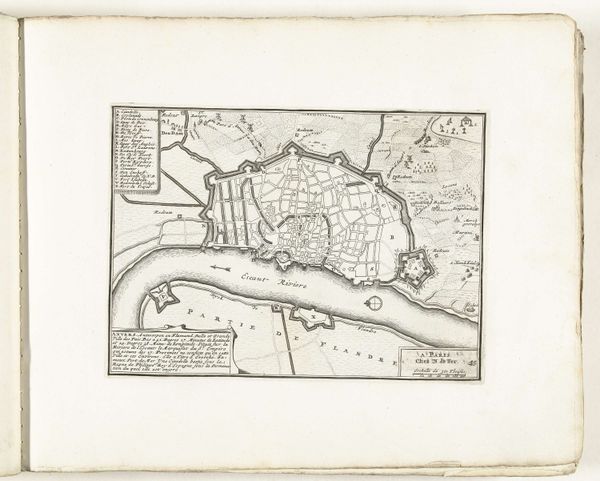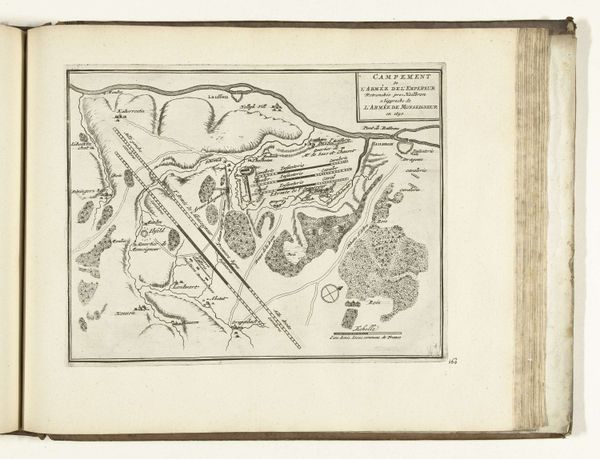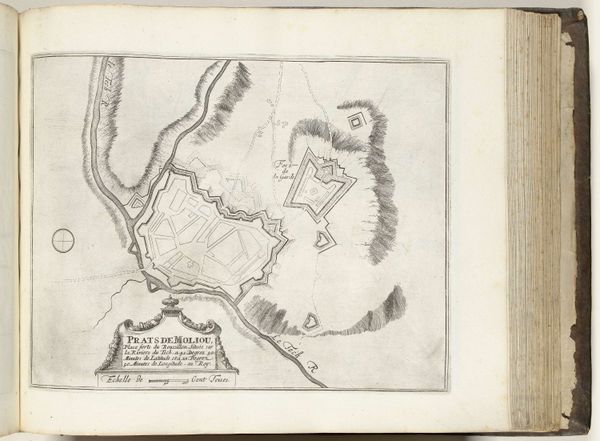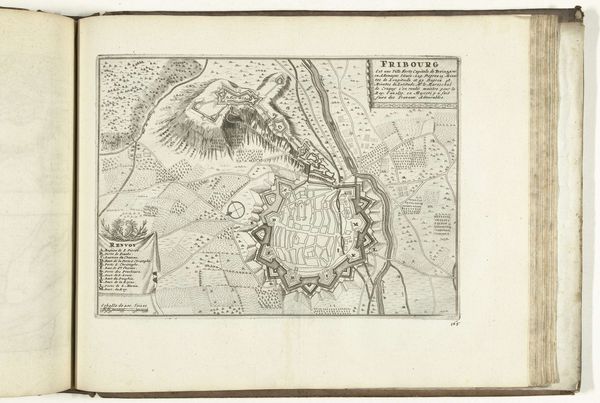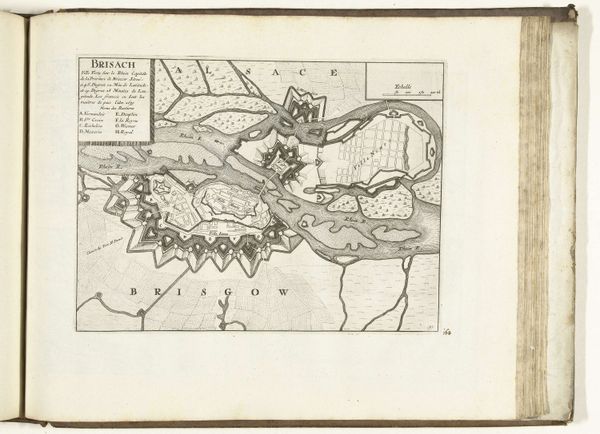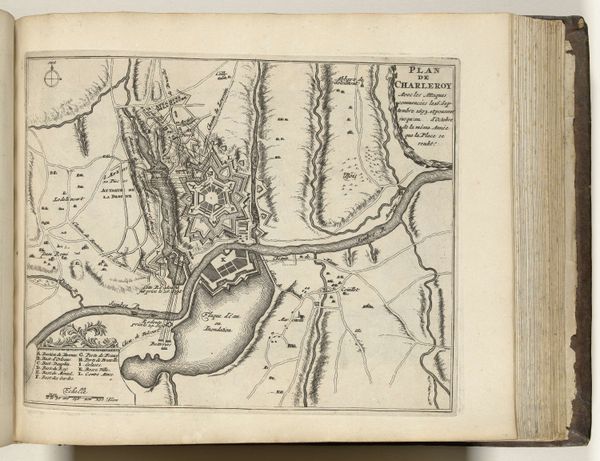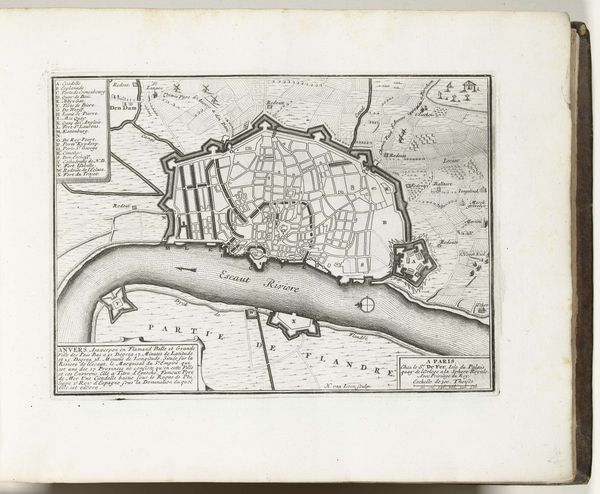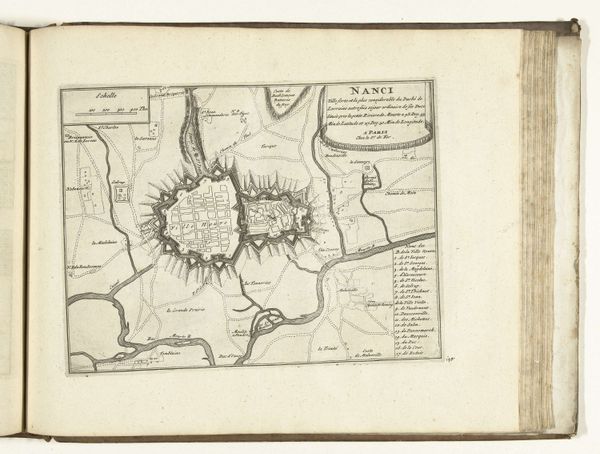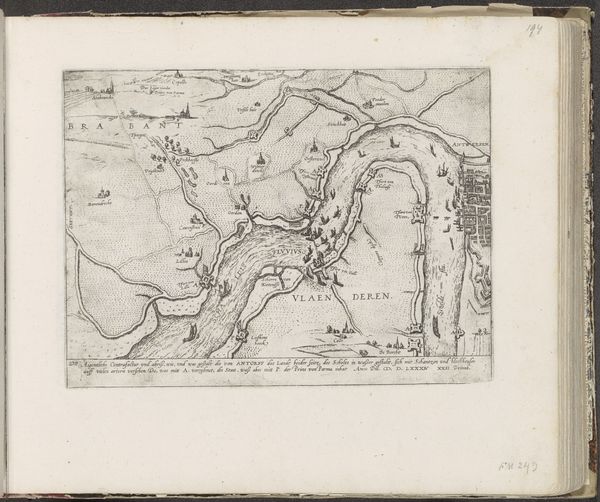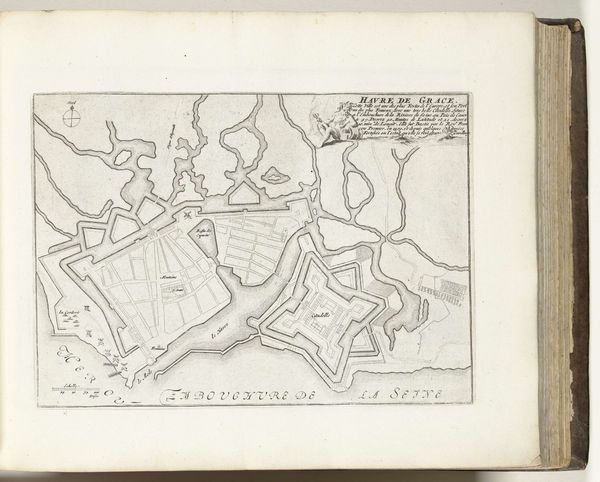
drawing, etching, paper, ink, pen
#
drawing
#
aged paper
#
toned paper
#
baroque
#
pen sketch
#
etching
#
sketch book
#
paper
#
personal sketchbook
#
ink
#
geometric
#
pen-ink sketch
#
pen and pencil
#
pen work
#
sketchbook drawing
#
pen
#
cityscape
#
history-painting
#
sketchbook art
Dimensions: height 226 mm, width 287 mm
Copyright: Rijks Museum: Open Domain
This is an anonymous print of Palamos, dating to 1694, made using an engraving technique. The fine lines and precise details were achieved by incising an image into a metal plate, likely copper, with a tool called a burin. Ink was then applied to the plate, and the surface wiped clean, leaving ink only in the etched lines. Finally, paper was pressed against the plate to transfer the image. The linear quality of the engraving lends itself well to mapping, emphasizing the planned layout of the city, its fortifications, and its relationship to the sea. This wasn't just an artistic exercise; it was a form of knowledge production, a way of asserting control over territory. Consider the labor involved in creating such a detailed image. The engraver needed not only technical skill, but also a deep understanding of cartography. In a sense, this print embodies the values of the 17th century, combining scientific observation with artistic skill, all in the service of power and commerce. Ultimately, it is a reminder that even seemingly objective images are the product of human hands and intentions.
Comments
No comments
Be the first to comment and join the conversation on the ultimate creative platform.
